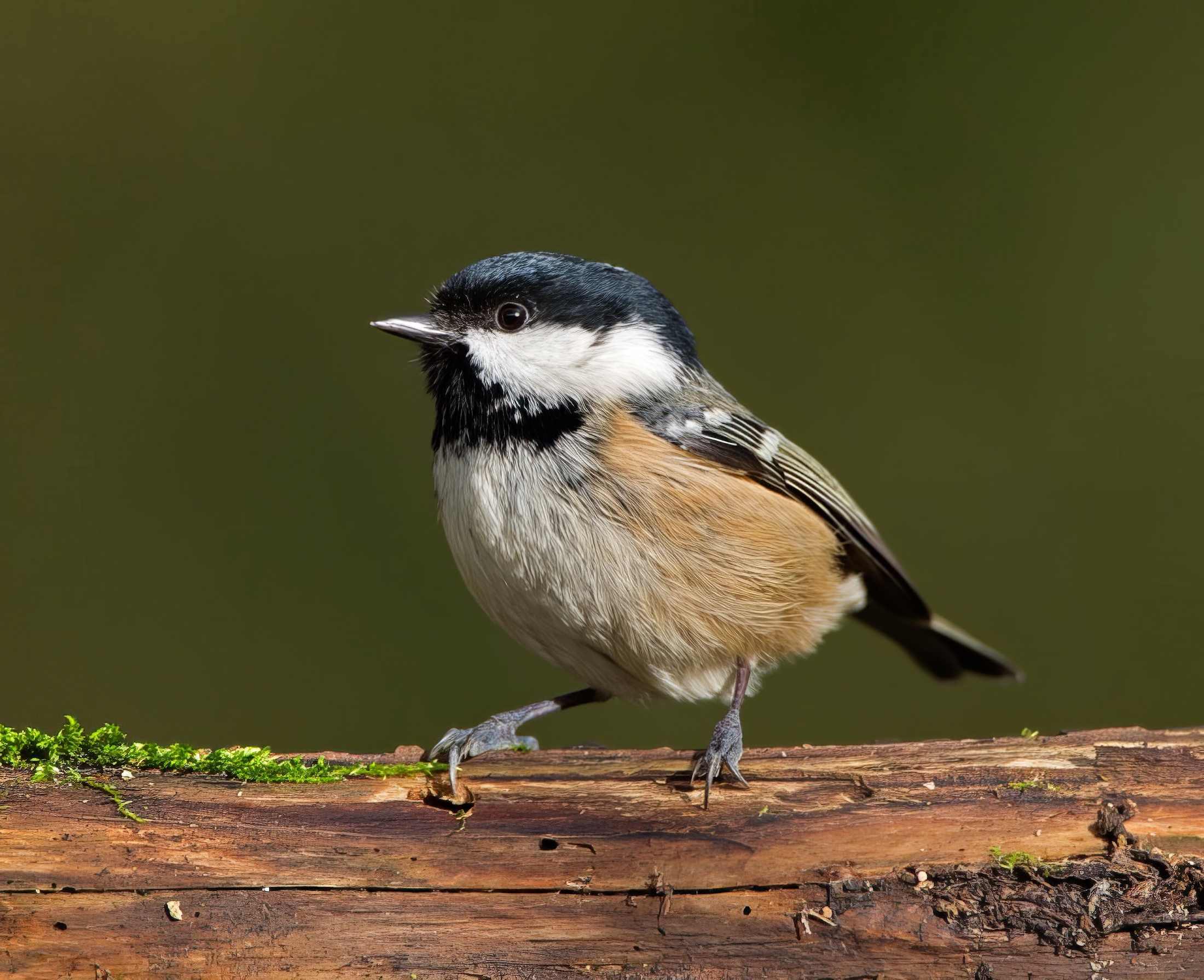Coal Tit Periparus ater
British form brittanicus is a common resident and passage migrant. Nominate continental form a very scarce irruptive visitor in autumn, claims of this subspecies currently under review but probably annual in small numbers.


Coal Tits use broadleaf and coniferous woodland but prefers the latter and gardens with large conifers are usually essential for this characterful little bird. It is fairly widespread in Lincolnshire but missing from much of the Fens due to habitat limitations. The Atlas estimated around 3,500 pairs in Lincolnshire in the late 1980s. This Tit is too scarce in Lincolnshire to produce a reliable BBS index, but the figures for East Midlands suggest a long-term increase since 1994 of only 5%. Surprisingly the APEP4 estimate comes in at 1,800 pairs in 2016 but this apparent fall may be a random result arising from the small number of BBS squares in which this bird appears in Lincolnshire. The LBR reports very few large flocks and the largest over the five years to 2018 was 25 at Osgodby Moor in January 2015. During this period there were no reports of significant coastal movements. Many Coal Tits have been ringed in the county and multiple re-traps of individual birds has revealed how site-faithful they are. A few likely continental birds have been trapped on the coast over the years but there have been none recovered abroad nor have foreign-ringed birds been trapped in the county as far as we are aware.
An autumn 'invasion' year: Unusual numbers of Coal Tits away from breeding sites in autumn 1985
by G. P. Catley
Coal Tits are known to occur occasionally on the coast in the autumn either as continental migrants or wandering British birds. Racial identification is, however, rather subjective. And it is not clear whether the 1986 influx was of continental or British birds, but it was clearly associated with higher than average numbers of Treecreepers and Great Spotted Woodpeckers also seen on the coast during the autumn. The first coastal record during the autumn was at Gibraltar Point on August 23rd before a notable passage of birds from September 20th-October 5th. This movement was associated with the arrival of numbers of Scandinavian and continental night migrants but does not rule out a British origin.
At Cleethorpes after a single on September 25th, there were two on 27th-28th, with four at Saltfleetby on 20th and four on 25th-29th. Gibraltar Point had singles on 20th, 24th and 27th and 10 were ringed at Theddlethorpe 21st-28th. A single at Donna Nook on 27th was followed by a party of nine there on 29th with presumably seven of these remaining at Donna Nook on October 1st. The same day five flew west along the Humber at New Holland, with another west there on 19th and two west at Barton pits on 14th rising up to fly over the Humber Bridge approach road. October records at Cleethorpes were a single on 8th, with daily records 13th-22nd, and two on 25th, and one on 28th; Tetney had two on 2nd and one on 21st; two were at Humberstone Fitties on 17th, and one was at Pye’s Hall on 12th. Other singles were noted at Donna Nook on 6th and 10th. At Saltfleetby October records were one on 1st, two on 5th, two on 10th,three on 12th, four on 15th and one on 21st with five trapped and ringed. Two were at Theddlethorpe on 14th and two were at Anderby Creek on 24th (sharing the same bushes as five Chiffchaffs, two Firecrests and a Yellow-browed Warbler!). Gibraltar Point had three on 10th, one 12th, two on 13th and singles in November 1st-2nd and 4th, with two on 15th. The only other coastal record in November was at Saltfleetby on 15th but unusual inland records came from Louth 21st-23rd, Wyberton with two from November 3rd-December 14th, and Saltfleetby St Peter November 14th-24th. A single wintered in scrub at Barton pits in December; also, in December there were 11 at Swallow 23rd, one at Louth 13th and two Cleethorpes 3rd-5th with a single 9th-12th and 15th. It will be interesting to see if there is a return coastal passage in spring 1986 or if any of the ringed birds are subsequently recovered to give a suggestion of origin.
(Note: since this article was written, there was no evidence for a return coastal passage in spring 1986 nor recoveries of ringed birds).

Dated records of passage Coal Tits, September-November 1985.
(Account as per new Birds of Lincolnshire (2021), included October 2022)
